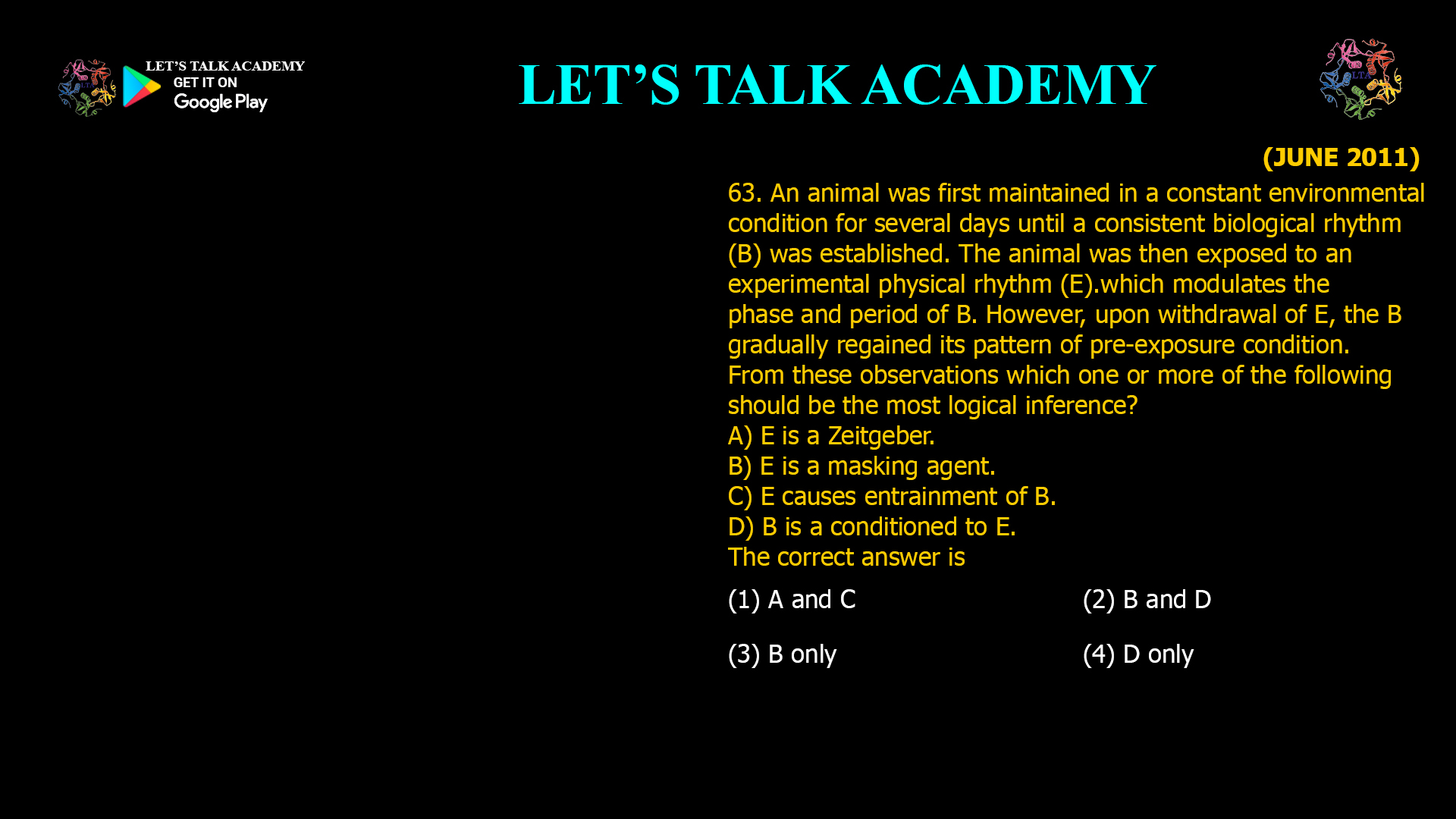- An animal was first maintained in a constant environmental condition for several days until a consistent biological rhythm (B) was established. The animal was then exposed to an experimental physical rhythm (E).which modulates the phase and period of B. However, upon withdrawal of E, the B gradually regained its pattern of pre-exposure condition.
From these observations which one or more of the following should be the most logical inference?
A) E is a Zeitgeber.
B) E is a masking agent.
C) E causes entrainment of B.
D) B is a conditioned to E.
The correct answer is
(1) A and C (2) B and D
(3) B only (4) D onlyExperimental Scenario: Zeitgebers and Biological Rhythms
When an animal is kept in constant environmental conditions, it develops a stable, free-running biological rhythm (B). If the animal is then exposed to a new, regular environmental cue (E), and B’s phase and period shift to match E, this is known as entrainment. If, after removing E, the rhythm B gradually returns to its original pattern, it indicates that E was acting as a zeitgeber—an external cue capable of synchronizing the internal clock.
Logical Inferences from the Experiment
Based on the described scenario:
-
E is a Zeitgeber (A): E acts as an external cue that can synchronize the animal’s internal rhythm, a defining feature of zeitgebers.
-
E causes entrainment of B (C): The process by which B’s phase and period are modulated to match E is called entrainment, a hallmark effect of zeitgebers on biological rhythms.
Other options, such as masking or simple conditioning, do not fit this pattern because masking refers to immediate, non-clock-based behavioral responses, and conditioning implies a learned association rather than a true resetting of the internal clock.
Conclusion
The correct answer is: (1) A and C
-
E is a zeitgeber.
-
E causes entrainment of B.
-




1 Comment
Kajal
October 15, 2025A and C